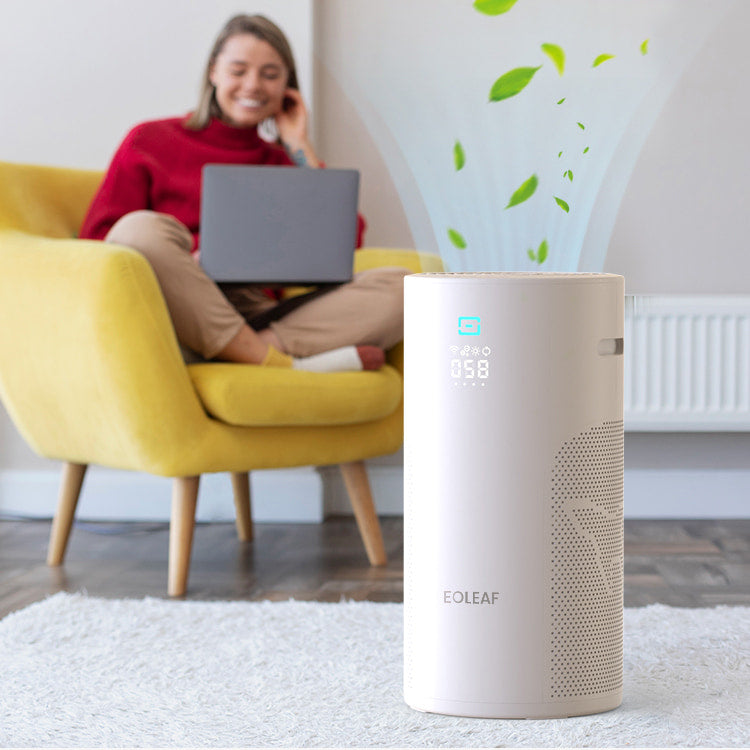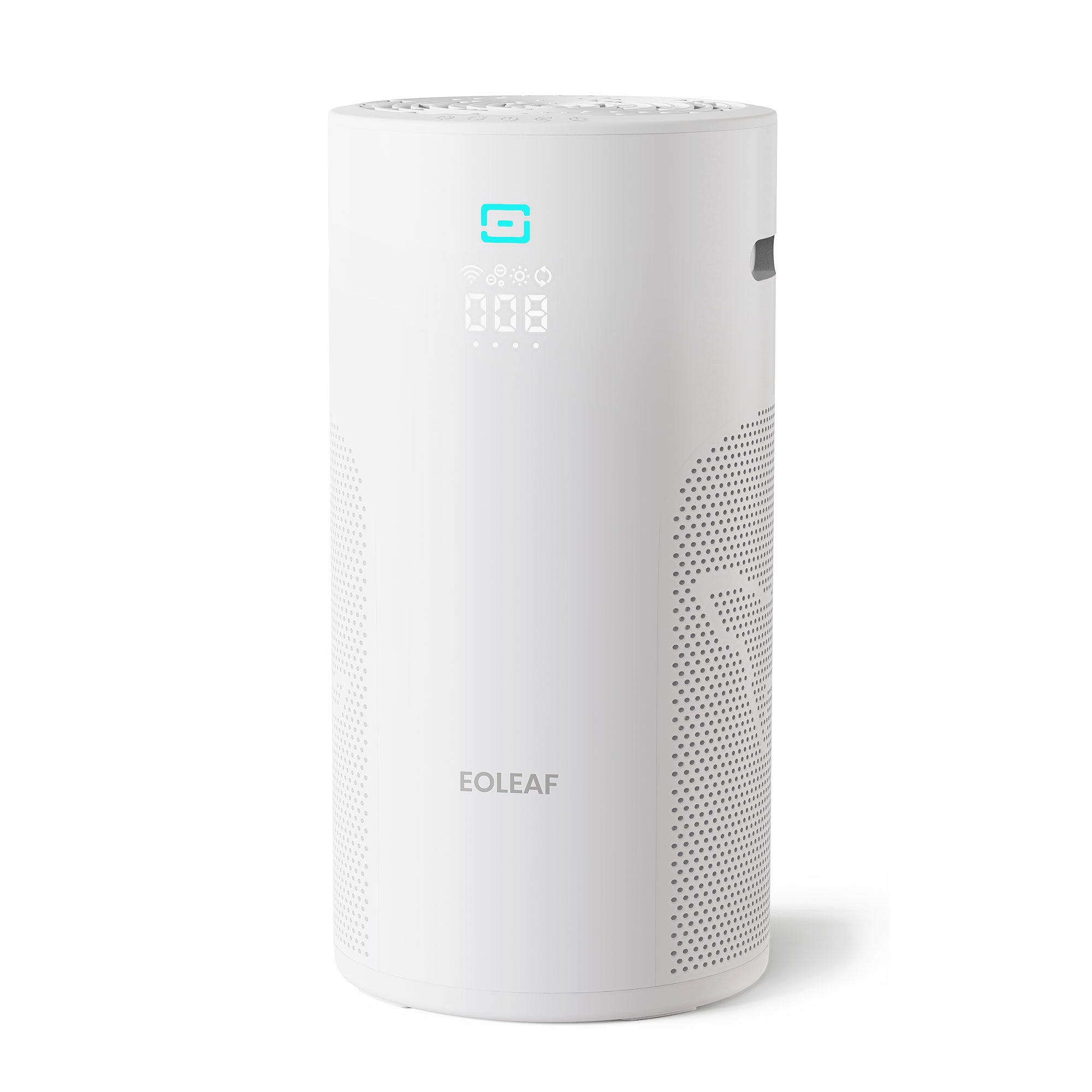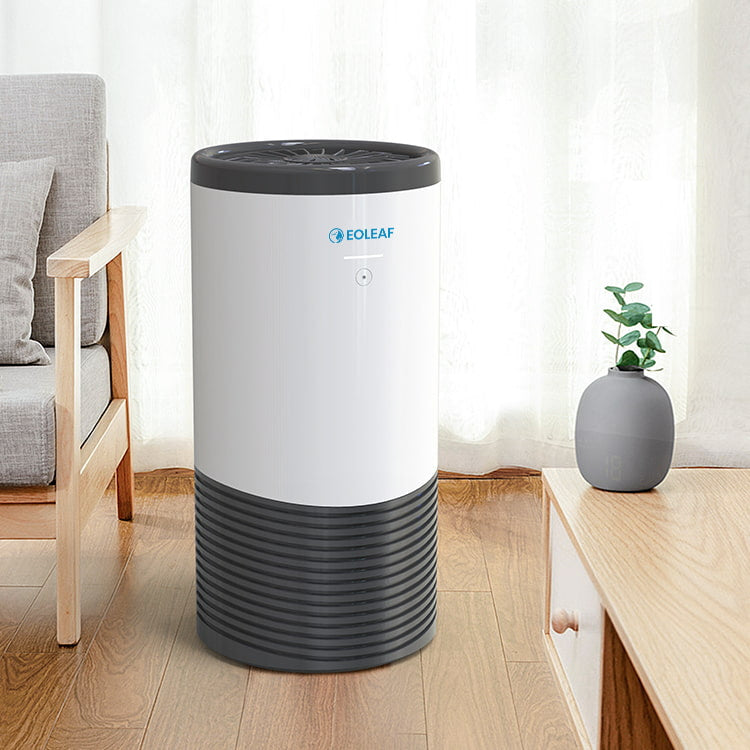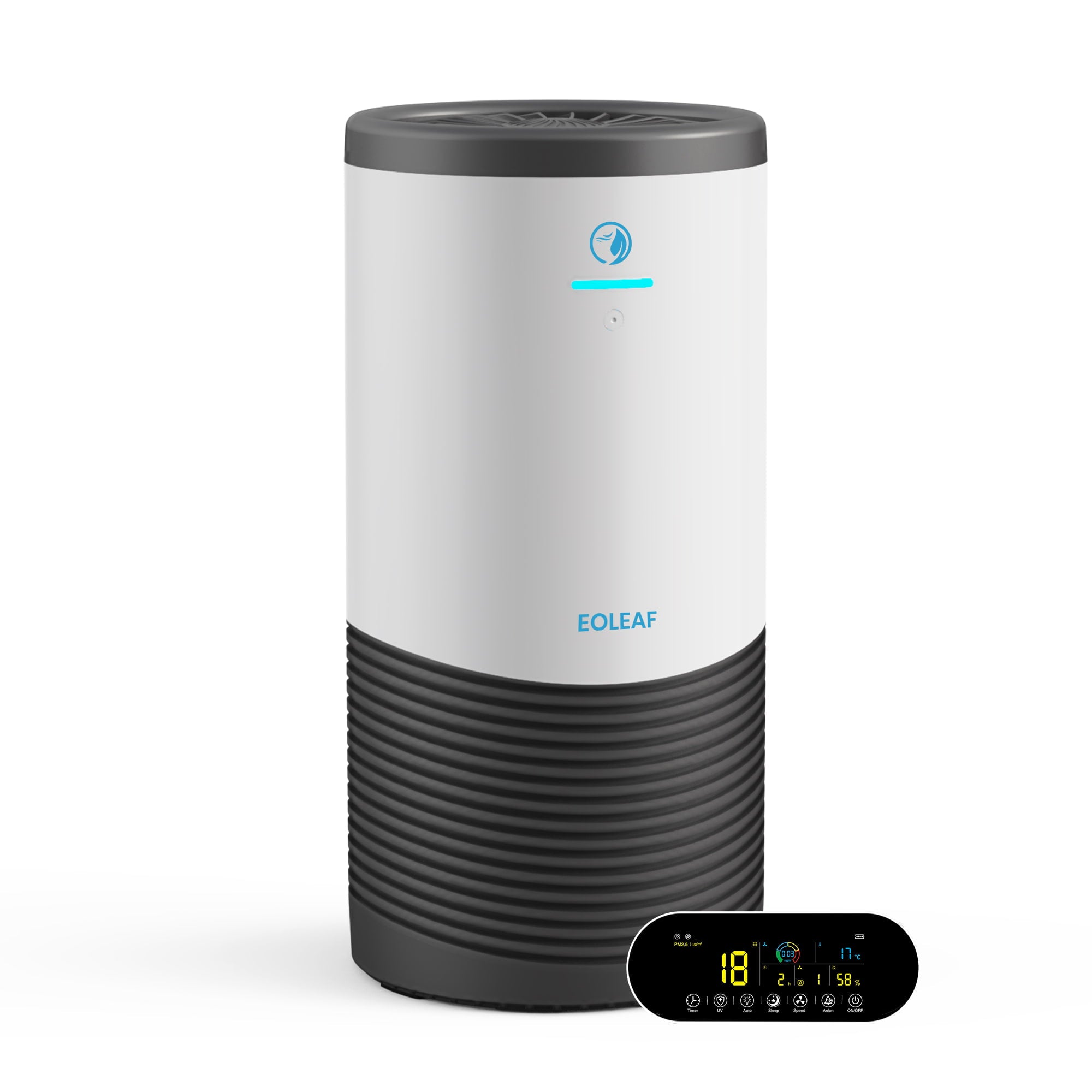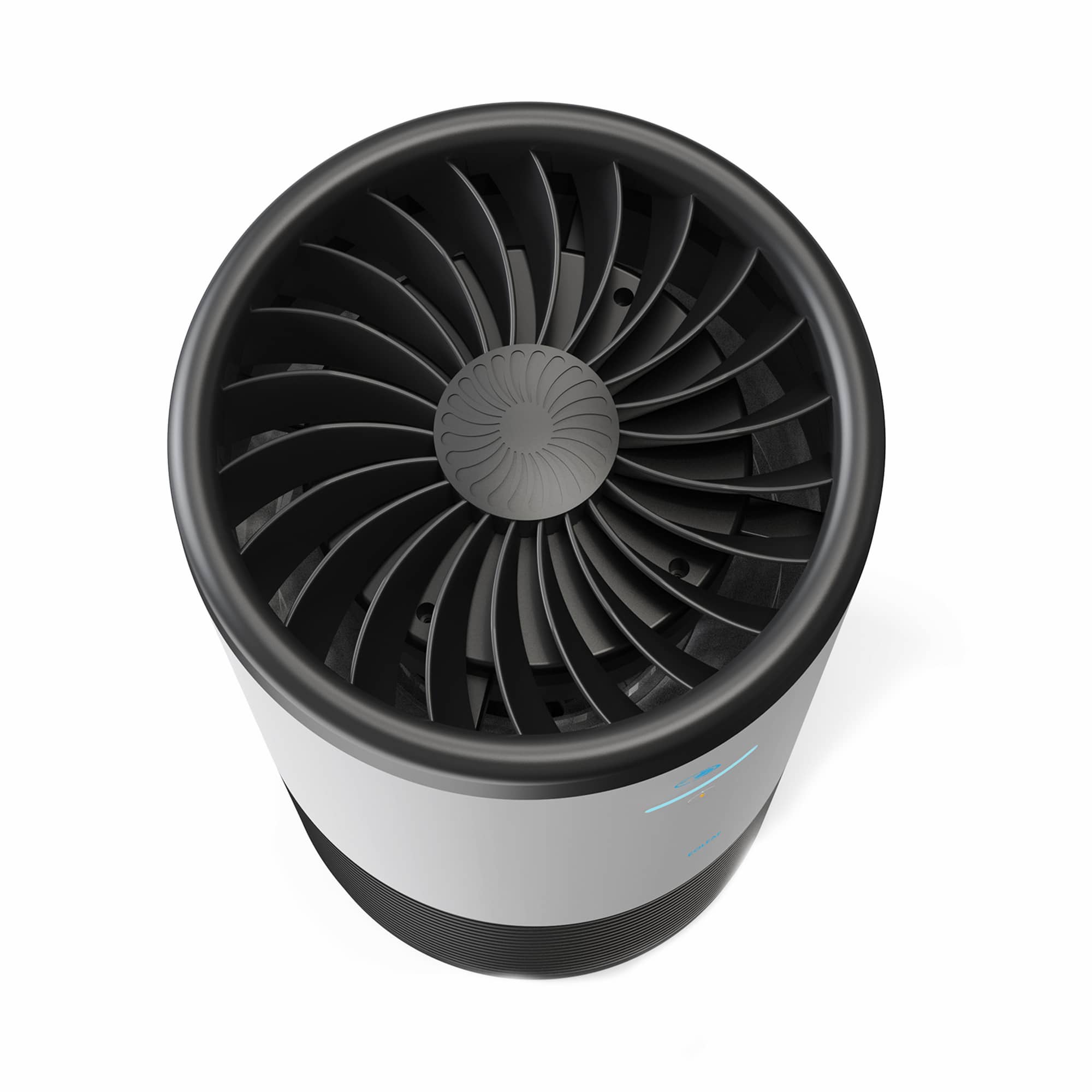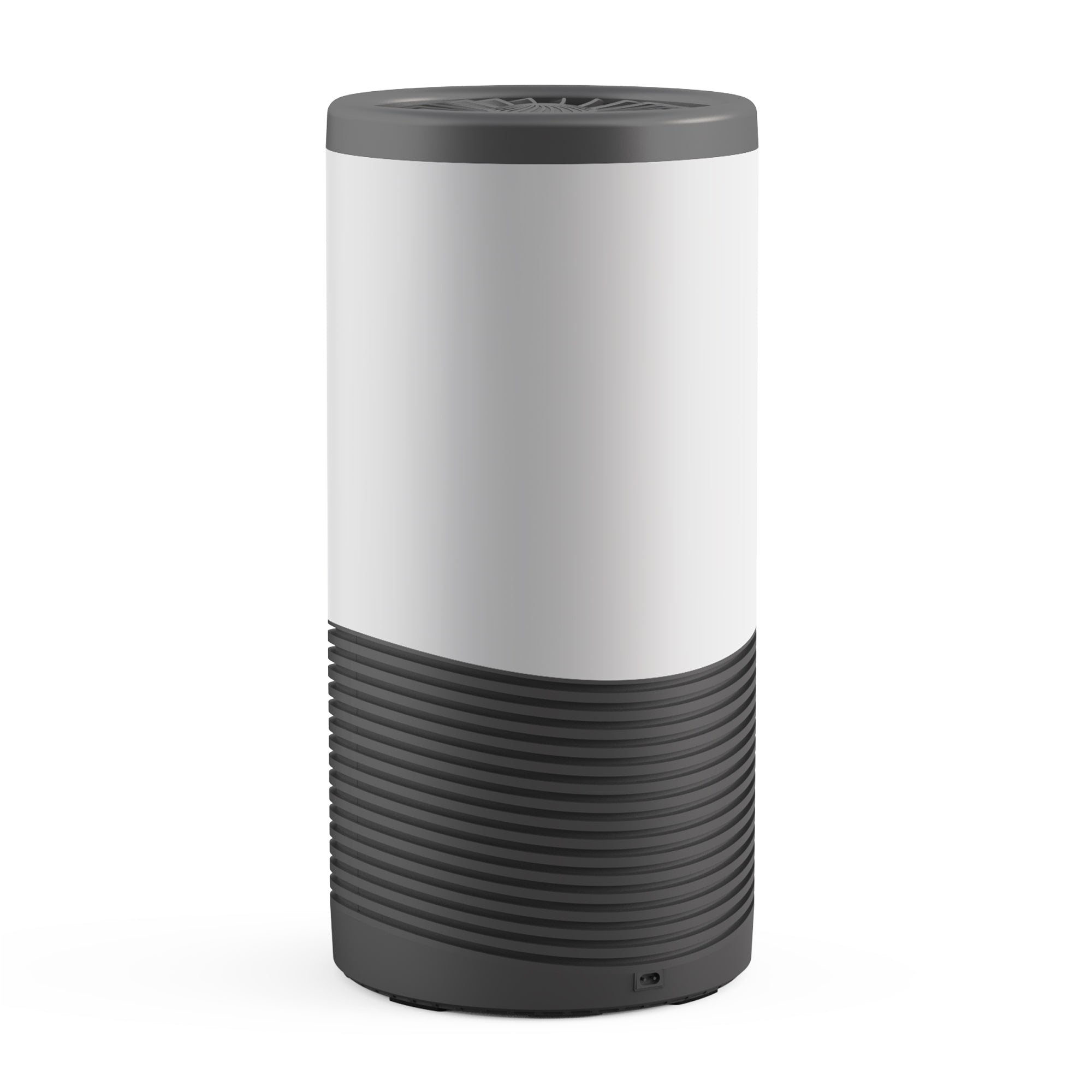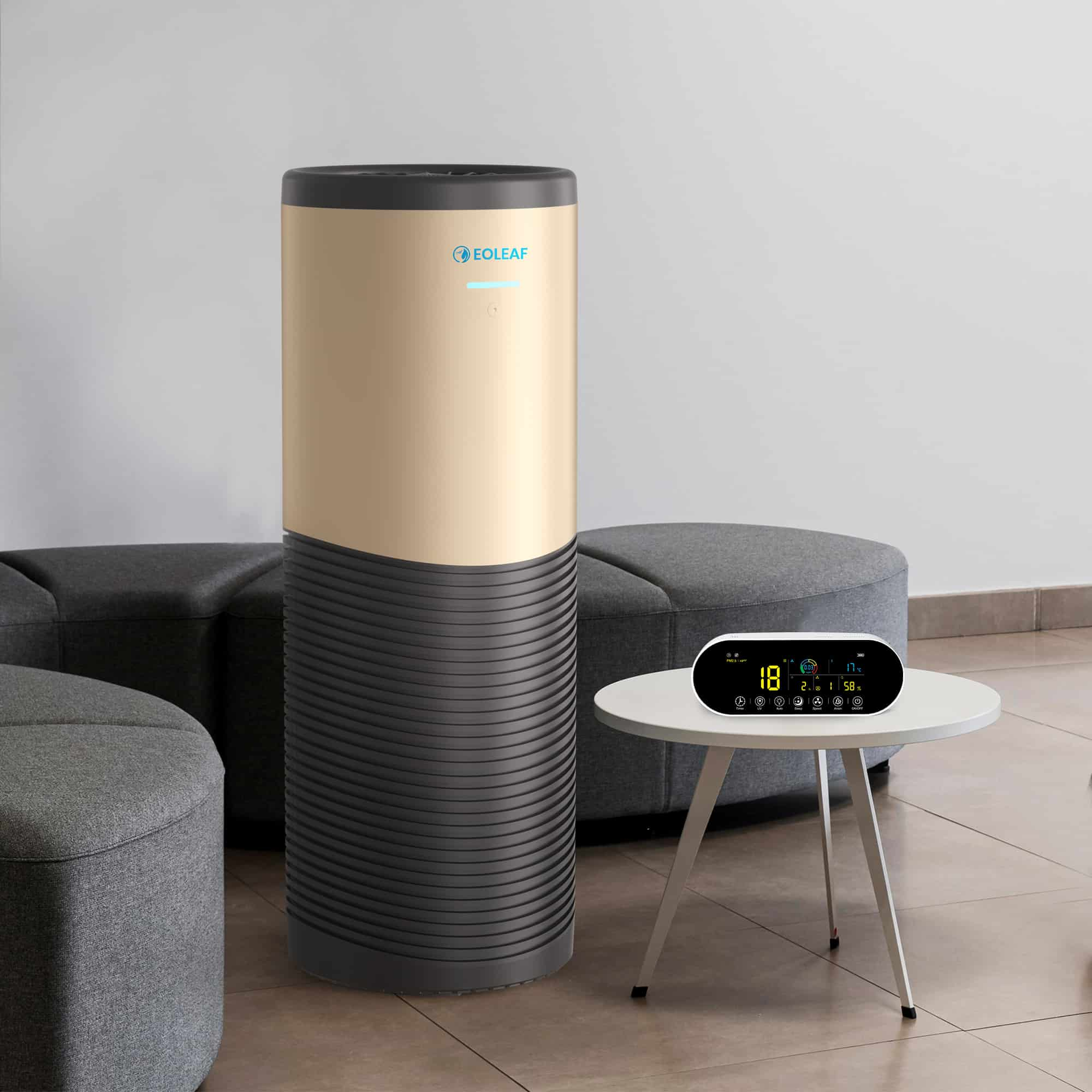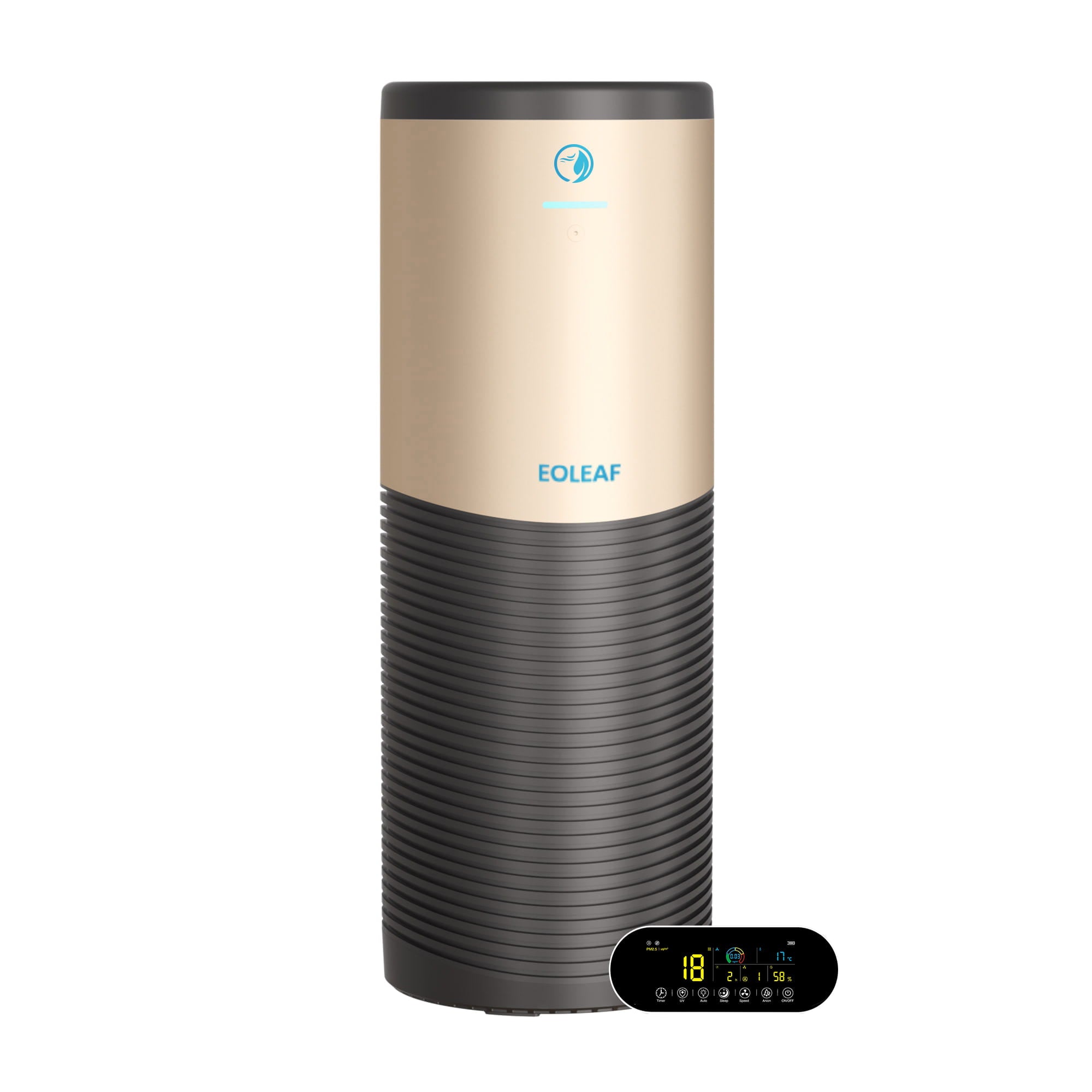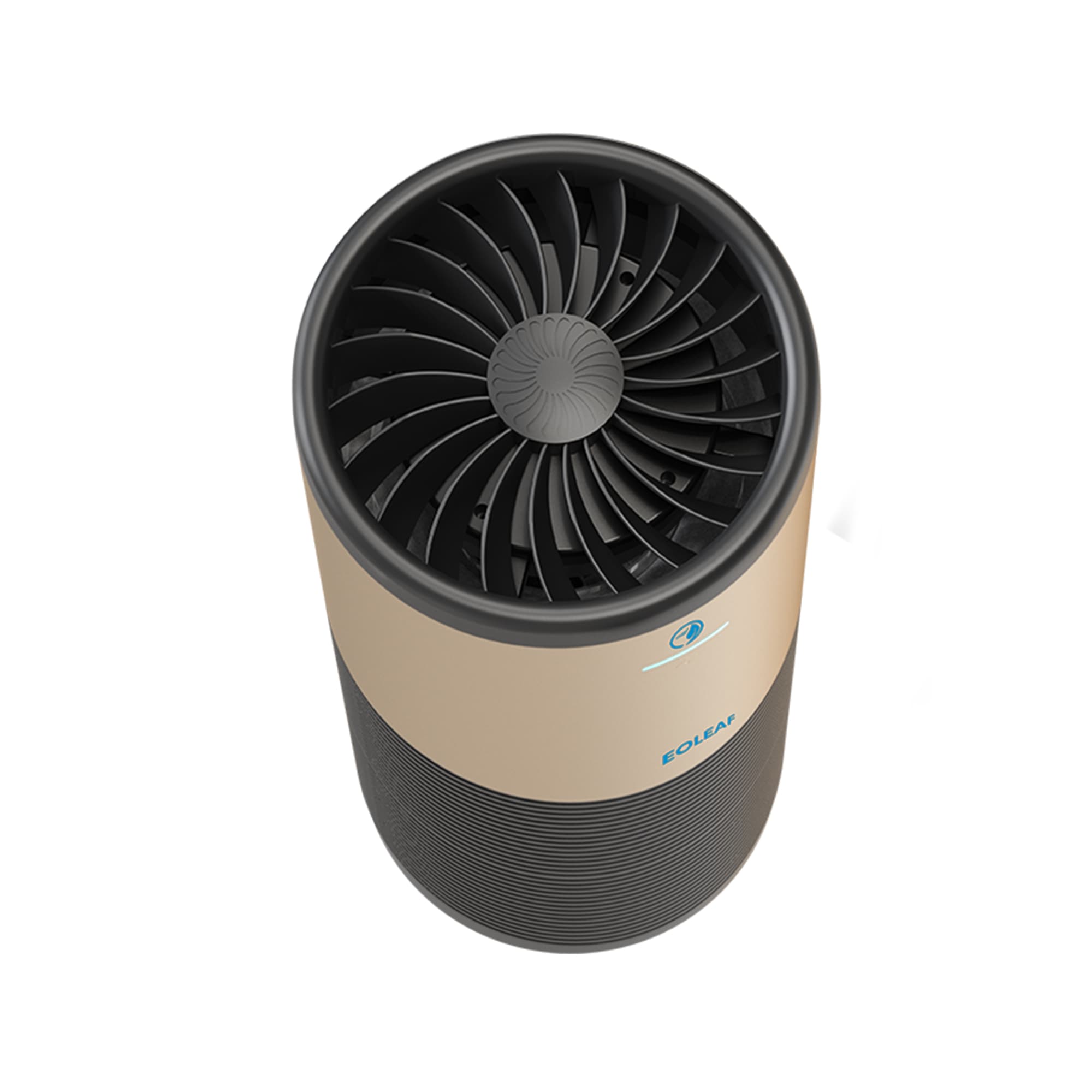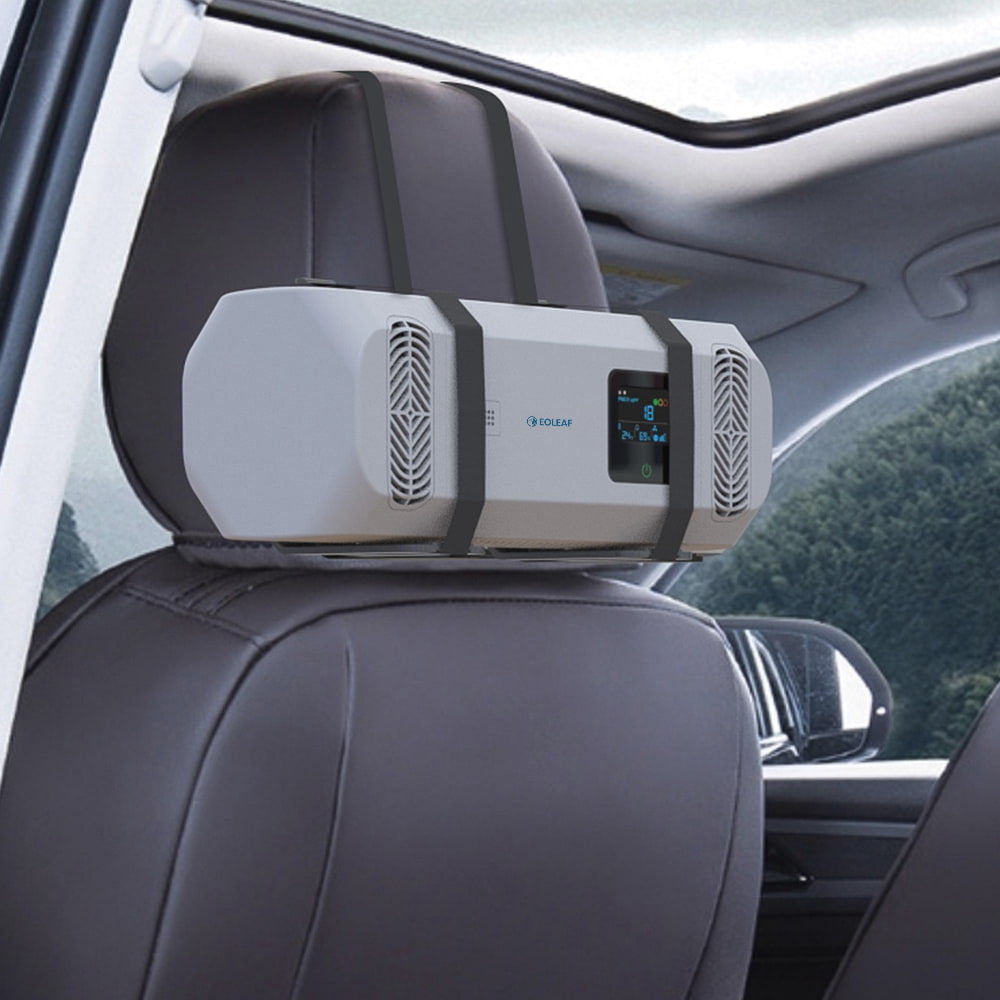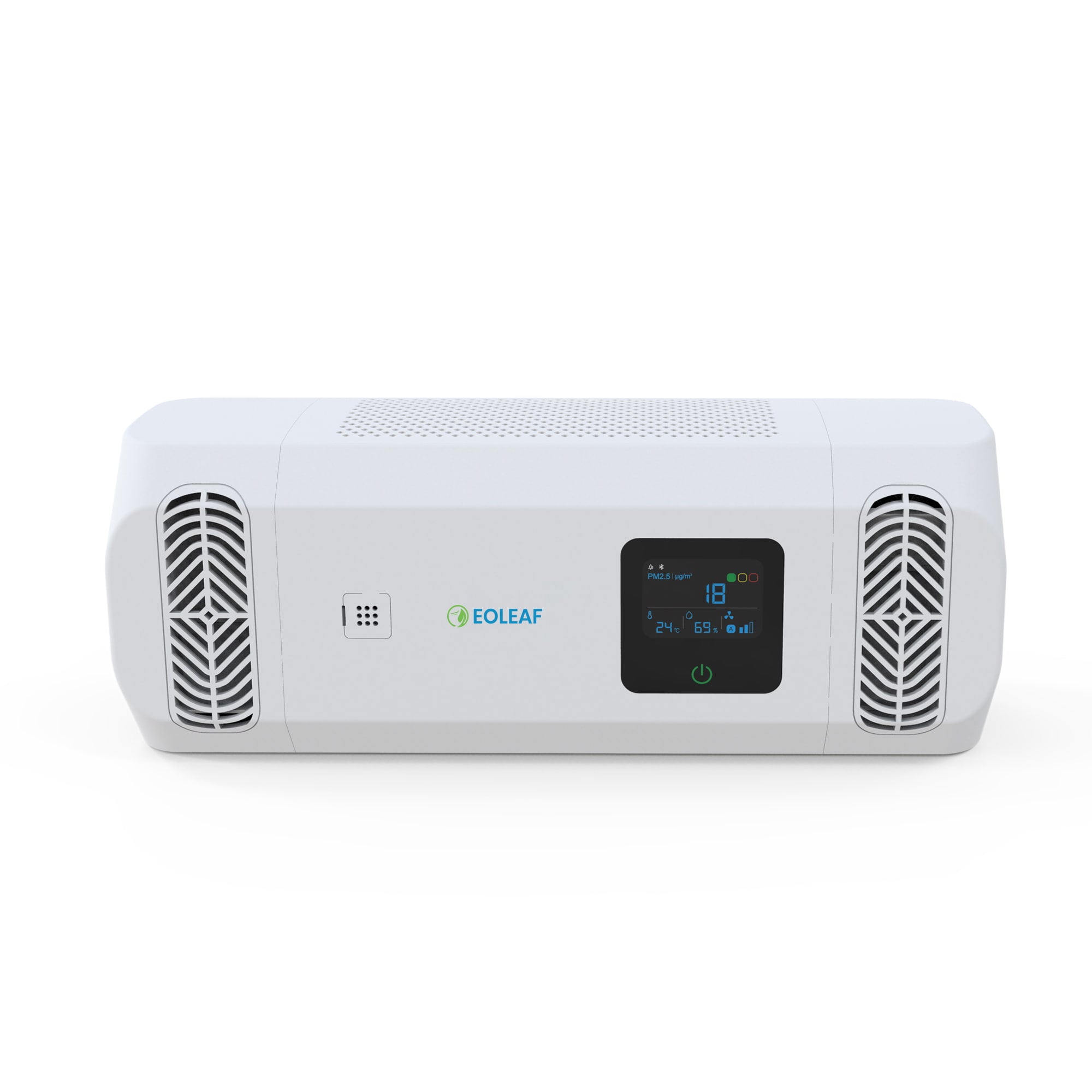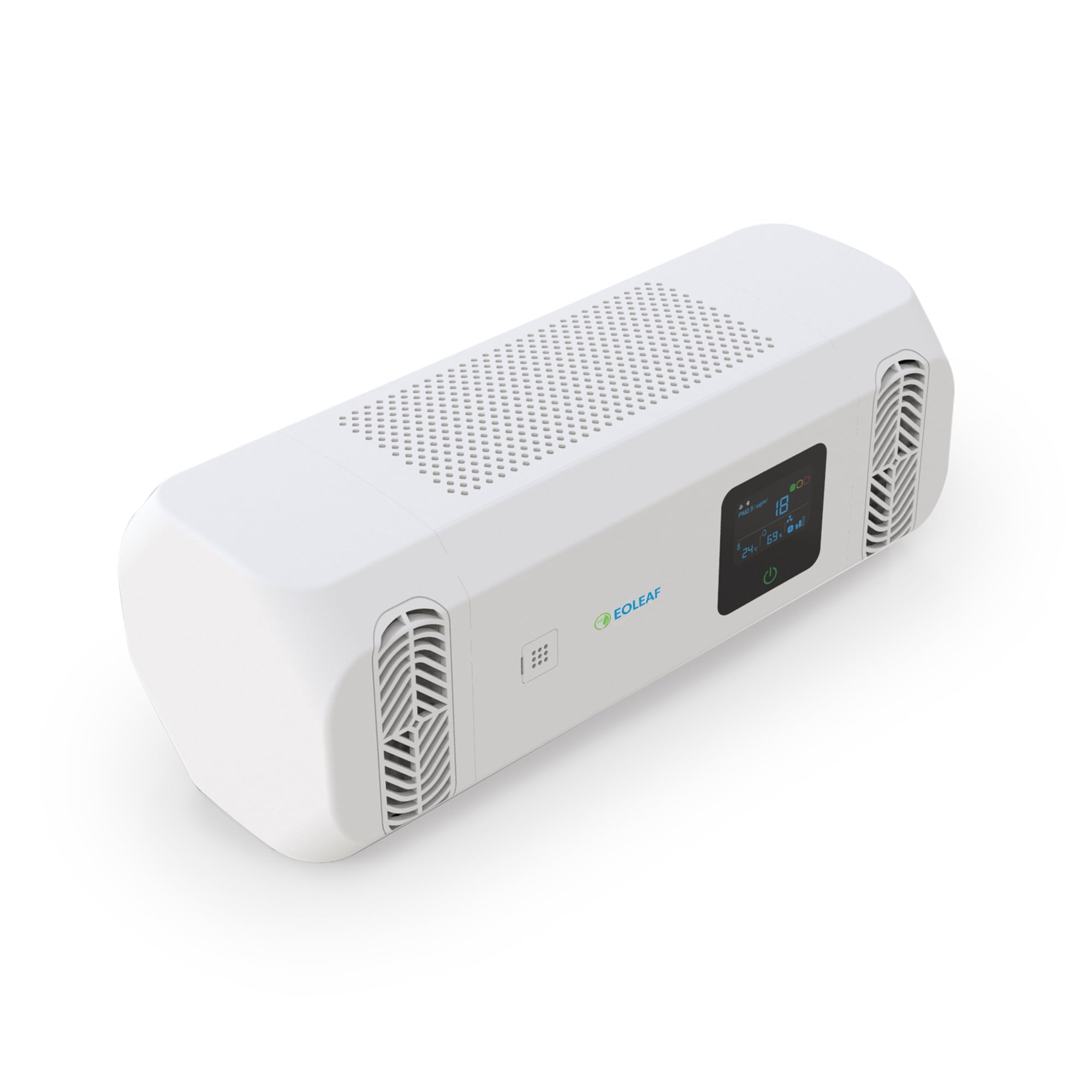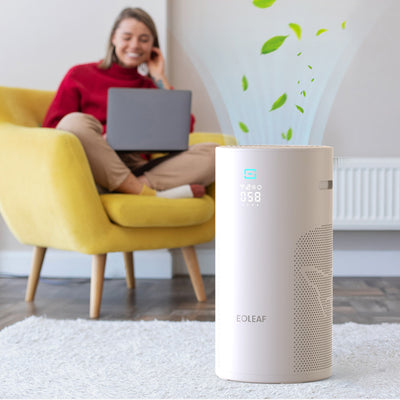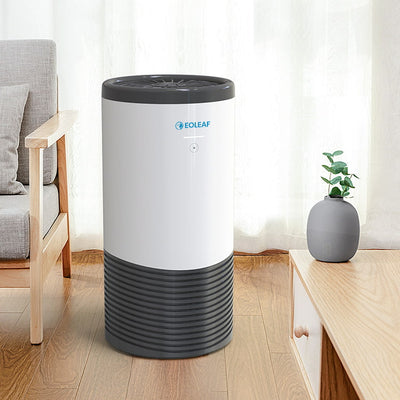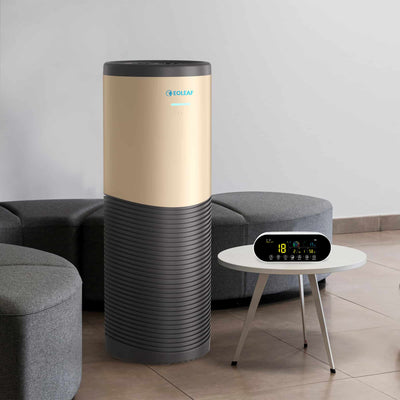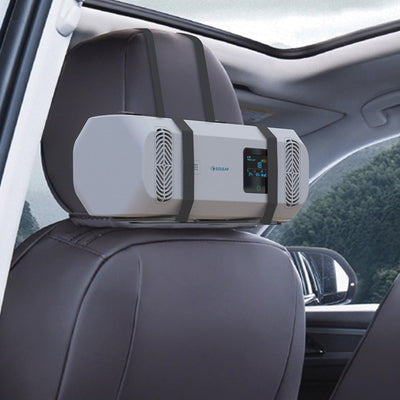Buying an air purifier for wildfire smoke
The devastation caused by the Los Angeles wildfires of early 2025 attracted attention all over the world: it is estimated that the fires in LA destroyed over 18,000 structures and burned more than 69,500 square miles (nearly 18,000 hectares). California is not the only place grappling with fires that are both more frequent and more extreme: this is a trend that is being observed in other parts of the world. Not only are wildfires devastating to physical property, but they pose substantial danger to health. Why is wildfire smoke so dangerous? What can we do to protect ourselves? Read on to learn more.

Wildfire trends since 2020
As California reels from the horrendous damage caused by the wildfires in early 2025, it is important to note that this is not just a one-off event. Wildfire occurrence has been on the rise in North America as well as other parts of the globe. In Russia, 19 million hectares (73,000 square miles) have burned since 2020. This is four times the long-term average. Warmer-than-average temperatures have led to an increase in both wildfire occurrence and spread in the region1.
Similar trends have been observed in both North America and Australia. The Canadian wildfires of the 2023 fire season burned the most land ever recorded in Canada2. Australia, on the other side of the globe, experienced a record 8,600 bushfires in 2020 that claimed the lives of 33 people and an estimated three billion animals3.
Understanding wildfire smoke and its impact on indoor air quality
Yes, structural damage and loss of life in both humans and animals are devastating. However, the impact of a poor air quality index caused by wildfires touches a much vaster population with long-lasting effects on health that may be suffered for years to come, placing a significant burden on global health systems and quality of life for many.
What are the main components of forest fire smoke?
Particulate matter
Wildfires emit significant concentrations of PM2.5 and PM10. PM2.5 is widely considered to be the most dangerous type of particulate matter (PM), but PM10 nevertheless causes risks to human health and air quality as these particles are still small enough to reach our respiratory systems and wreak havoc on our cardiovascular and respiratory health.
To put these particle sizes into perspective, PM2.5 particulates are 30 times smaller than the width of a human hair. Due to their small size, they are able to gain access to the human body when inhaled and are then able to quickly travel to other parts of the body, and once they enter the bloodstream, they may gain access to the brain and heart.
Due to wildfire’s potential to damage health, health officials will advise staying indoors if there is a wildfire nearby. Unfortunately, during periods of wildfire activity, even interior air is unhealthy to breathe because of the ease with which outdoor air pollution may enter and become trapped in our homes4.

Volatile organic compounds (VOCs)
Particulate matter is not the only concerning component of wildfire smoke. A 2024 study found that forest fire smoke contains benzene, a carcinogenic VOC and airborne toxin, with concentrations of over 11 µg/m3 and up to ten times the normal level in some cases. According to the study, this equates ‘seven extra cancers per million for lifetime exposure and thirteen extra cancers per million considering all air toxics measured’5.


Source 5: concentrations of PM2.5 and benzene during two separate wildfire events
Other VOCs and forms of chemical pollution are also present in forest fire smoke including toluene, ethylbenzene, xylene, ozone, carbon monoxide, methane, sulphur dioxide, and polycyclic aromatic hydrocarbons (PAHs)6.
How does wildfire smoke affect health?
Exposure to components found in forest fire smoke have important impacts on health in both the short-term and long-term.
Short-term health effects of wildfire smoke exposure may include:
- Headaches
- Cough ranging from light to severe
- Extra mucus production
- Irritation of the eyes, nose, and/or throat
- Dizziness
- Wheezing
- Chest pain
- Aggravated respiratory disease symptoms including asthma attacks
As with exposure to all types of air pollution, all populations are at risk of serious health effects, but populations most at risk include children, the elderly, pregnant women, and immunocompromised/immunosuppressed individuals.
Some long-term health effects of wildfire smoke exposure may include:
- Respiratory diseases including asthma, COPD, and pulmonary embolism
- Multiple types of cancer including lung, head, neck, nasopharyngeal, breast, and bladder (it is estimated that over 10% of cancer cases in Europe are due to air pollution, mainly PM2.5)
- Cardiovascular diseases
- Mental health conditions like anxiety and depression
- Decreased fertility
This list is not exhaustive: for a more extensive description of air pollution’s effects on health, refer to our article on the subject here.
Why indoor air quality matters during wildfire events
As mentioned above, not just outdoor air quality (air quality index) is impacted by wildfire events: indoor air quality is also at high risk of degradation. Wildfire smoke can easily gain access to your indoor spaces through windows, doors, and other points of entry. The Government of Canada makes the following suggestions in order to protect your indoor air during wildfire events:
- Keep windows and doors closed as much as possible
- Install clean, high-quality filters in your ventilation system
- Avoid using exhaust fans like those in bathrooms and kitchens
- Invest in and use a portable, high-quality air purifier6

How air purifiers remove wildfire smoke particles
Key filtration technologies for smoke removal
Air purifiers are not all designed with the same filtration capacities. This is why there is such a variety of air purification products on the market. When purchasing an air purifier for wildfire smoke, it is important to find one that will combat all types of air pollution of which wildfire smoke is composed.
HEPA filters
One of the best ways to protect your health from the dangers of particulate matter (PM) of all sizes is to purchase an air purifier with a HEPA filter. HEPA, or “High-Efficiency Particulate Air”, is a certification given to certain filters that have been tested by third parties and guaranteed a certain rate of filtration.
HEPA ratings are as follows:
- H10
-
- Filtration rate: 85%
- Allows 15,000 particles of 0.1 micron per litre of air to pass through
- H11
-
- Filtration rate: 95%
- Allows 10,000 particles of 0.1 micron per litre of air to pass through
- H12
-
- Filtration rate: 99.5%
- Allows 500 particles of 0.1 micron per litre of air to pass through
- H13 (as used in Eoleaf products)
-
- Filtration rate: 99.95%
- Allows 50 particles of 0.1 micron per litre of air to pass through
- Medical-grade category
- H14
-
- Filtration rate: 99.995%
- Allows 5 particles of 0.1 micron per litre of air to pass through
- Medical-grade category
Some air purifiers will claim to have “HEPA filters” or “HEPA-type filters”, but if you do not see the word “certified”, these claims remain unverified, as does the filtration rate that these products may claim. HEPA-certified filters have a MERV rating of at least MERV 17, meaning that they remove at least 99% of particles in a single pass. Read more about MERV here.
Although they do have their limitations, HEPA-certified filters are some of the most effective on the air purification market when it comes to the removal of particulate matter of all sizes, including PM10, PM2.5, and PM0.1 emitted by wildfire smoke and dust.
Activated carbon filters
As mentioned above, HEPA-certified filters do have their limitations. Although very effective against fine particle pollution (PM), they are unable to combat other types of air pollution like chemical pollution (including carbon monoxide, ozone, or VOCs like benzene or formaldehyde). When protecting yourself from wildfire smoke, it is essential to find an air purifier that will remove harmful gases, too!
Activated carbon filters are the most tried-and-true way to filter harmful gases like those mentioned above, even the most dangerous, carcinogenic VOCs like formaldehyde and benzene. Activated carbon also removes odours which could greatly improve your well-being if you are living in an area experiencing a wildfire event. Again, not all activated carbon filters are created equal: when researching a potential air purifier for purchase, be sure to inquire about the weight of the activated carbon within your filter. The heavier the filter, the more effective it is, and the more pollutants it can store! Eoleaf devices come equipped with high-quality, heavy filters that contain the following amounts of activated carbon, for example:
- AltaPur 700: total filter weight 3.6 kg (7.9 lbs), contains 1280 g (2.8 lbs) of activated carbon
- TeraPur 600: total filter weight 2.2 kg (4.9 lbs), contains 640 g (1.4 lbs) of activated carbon
- NeoPur 400: total filter weight 1.7 kg (3.7 lbs), contains 400 g (0.9 lbs) of activated carbon
- PurCar: total filter weight 135 g (4.8 oz), contains 30 g (1.1 oz) of activated carbon
Other essential technologies
The two above-mentioned technologies are the most commonly found in air purifiers on the market. However, some air purifiers take it a step further: Eoleaf devices set themselves apart on the air purification market in being the only air purifiers that offer a whopping 8 air purification technologies. This provides some of the most comprehensive air purification available, combatting all three main types of air pollution found in indoor air including fine particle pollution (PM), chemical pollution (harmful gases like VOCs), and biological pollution (allergens like pollen and dust and germs like bacteria and viruses). This is done using the following technologies:
- Pre-filter (capture airborne particulate matter with a particle size of between 3 to 10 microns)
- Bamboo fiber filter (natural material with excellent particle filtration properties)
- Lysozyme with a silver ion coating (serves as an antibacterial and antifungal barrier)
- Medical-grade HEPA H13-certified filter (removes 99.97% of all particle pollutants down to a size of 0.01 microns in a single pass)
- Activated carbon filter (filters harmful gases like VOCs, ozone, and carbon monoxide, as well as unpleasant odours)
- Photocatalysis (reduces chemical pollutants, VOCs, and complex gases)
- UVC sterilisation (a critical technology that not only destroys or deactivates airborne viruses and bacteria but also sterilises your filter to avoid the accumulation of pathogens)
- Ionisation (efficient against fine and nanoparticles)
When choosing an air purifier for wildfire smoke, why settle for just a couple of technologies when you can invest in an air purifier that offers them all?

Which filtration efficiency is required for wildfire smoke?
HEPA H13 vs. HEPA H14 filters
During wildfire events, you likely want to feel as protected as possible from poor air quality. That said, choosing an air purifier with the best possible filtration is probably on your radar.
Eoleaf has chosen to employ HEPA H13-certified filters in all our products. As mentioned above, HEPA H14 filters (also known as ULPA filters) have a 0.05% improvement in efficiency compared to HEPA H13 filters. These filters are often used in hospital settings, especially in operating rooms. If a more efficient filter exists, why don’t we use them?
Yes, HEPA H14 filters are effective! However, they considerably reduce the airflow of purified air into your space. These very fine-mesh filters make it more difficult to quickly and effectively suck in droplets and aerosols. Much slower air treatment is the price paid for the small efficiency gain.
CADR (Clean Air Delivery Rate)
Another important metric in the air purification world is CADR. CADR, or Clean Air Delivery Rate. CADR refers to the air purifying device's airflow. This is the amount of filtered air that an air purifier releases into your indoor space. Some air purifiers have only one CADR number, whereas others have several CADR values for different pollutants (such as smoking, dust, pollen, etc.). The faster a device removes pollutants, the higher its CADR number. That said, the higher the CADR, the better!
Find Eoleaf’s CADR values below:
- NeoPur 400: 420 m3/hr
- TeraPur 600: 570 m3/h
- AltaPur 700: 670 m3/hr
- PurCar: 45 m3/hr
When should you perform an air purifier’s filter replacement during a wildfire event?
Under normal usage and circumstances, Eoleaf air purifiers come equipped with high-quality filters that only require changes once per year (every six months for the Pure CAR). It is important to note that using an air purifier continuously, as one would be recommended to do during wildfire events, may require more frequent filter replacements. It is ideal to keep filter replacements on hand during wildfire season, and if after significant usage of your air purifier, you notice that the flow of purified air into your space seems to become slower, switch out your filter for a new one.

Key features to consider when choosing an air purifier for wildfire smoke
Room coverage and ACH (Air Changes per Hour)
Air purifiers are all designed to be used in spaces of a maximum size. Be sure that the model of air purifier that you have in mind is adapted to the size of the space in which you plan to install it. One of the ways to do this is to calculate a device’s ACH rate. ACH, or Air Changes per Hour, is the number of times an air purifier replaces the full volume of air in a room with clean air each hour. The Center for Disease Control (CDC) recommends an ACH value of 4 or 5, which indicates that a device replaces the air four or five times per hour.
Providing the specific size of your space, you can request that an air purifier manufacturer recommend the right model for your needs, the model that will achieve an ACH of 4 or 5. Using CDC recommendations, Eoleaf devices are sized as follows:
- NeoPur 400: spaces of up to 40 m2 (450 square feet)
- TeraPur 600: spaces of up to 80 m2 (850 square feet)
- AltaPur 700: spaces of up to 120 m2 (1300 square feet)
- PurCar: vehicle cabins of up to 13 m3 (459 cubic feet)
Noise levels and energy efficiency
Finding an air purifier that is quiet but still powerful and efficient is crucial, especially if considering installing it in a room that must be quiet (in a bedroom, for example). To learn more about the noise level of your potential air purifier, make sure to review its technical specifications. For instance, the noise levels of one of our most popular models, the TeraPur 600 from Eoleaf, are as follows:
- Speed 1: 30 dB (whisper-level)
- Speed 2: 45 dB (the typical noise level in a home)
- Speed 3: 53 dB (the intensity of light rain)
- Speed 4: 57 dB (the volume of typical speech)
- Speed 5: 60 dB (office noise level)
The amount of electricity your air purifier will use is another factor to think about before buying. This varies significantly based on the model of air purifier. It stands to reason that a small-space air purifier will use less electricity. The converse is also true: a large-space air purifier will use more electricity. Since air purifiers work best when operated almost continuously, your device may use a lot of electricity, particularly if it is operated at its highest speeds. The high energy efficiency of Eoleaf air purifiers (which pull 15W on average) means that even if left running constantly during wildfire events, your electric bill will not suffer. Our devices even offer an ECO standby mode that uses less than 2W of energy.
Smart features and air quality monitoring
Compatibility with smartphone apps, voice commands via virtual voice assistants, and intelligent scenario/scheduling options are just a few of the clever features that you may find in a smart air purifier (like Eoleaf’s, which contain all of the above)! Our devices are also equipped with Auto mode and real-time air quality sensors that provide you with a complete understanding of your indoor air quality. This is especially important during wildfire events.
How to maximise the efficiency of your air purifier during wildfire season
Best placement strategies for optimal wildfire smoke removal
The effectiveness and functionality of your air purifier can be significantly improved or hindered by the location you choose for it in your space. You can actually boost your air purifier's performance by 20% by choosing ideal placement!
When setting your air purifier, the two most important considerations are: 1) where in your space is the largest concentration of air pollutants? and 2) where is there ideal air flow? See our post on where to place an air purifier for a more detailed guide.
Additional steps to reduce indoor smoke pollution
If wildfire season is near and you are looking to take additional steps to protect your indoor space from wildfire smoke, a few small steps that you can take in addition to investing in and using a high-end air purifier is to install window and door seals and extra houseplants. These are both useful in further keeping your air safe from the dangers of wildfire smoke.

Common myths and mistakes when using an air purifier for wildfire smoke: frequently asked questions
Do air purifiers eliminate all wildfire smoke?
Not all air purifiers do! When choosing an air purifier, ensure that the device removes all types of air pollution. Eoleaf devices remove all three types of air pollution: fine particle pollution (PM), chemical pollution (harmful gases like ozone, carbon monoxide, and VOCs), and biological pollution (allergens and germs like viruses and bacteria and viruses). Our devices remove 99.97% of all air pollutants down to a size of 0.01 microns in a single pass.
Are expensive air purifiers always better?
Not necessarily! You don’t need to purchase the most expensive model of air purifier available to get the best air filtration. In general, it is recommended to find a device that falls in the mid-range pricing (not too cheap but not exorbitantly expensive). It is essential to check the technical specifications and ensure that you are getting the most bang for your buck.
Is one air purifier enough for a whole house?
This depends on two factors: 1) the size of your house and 2) the model of air purifier. Eoleaf devices are sized as follows:
- NeoPur 400: spaces of up to 40 m2 (450 square feet)
- TeraPur 600: spaces of up to 80 m2 (850 square feet)
- AltaPur 700: spaces of up to 120 m2 (1300 square feet)
For spaces larger than 120 m2 (1300 square feet), you will need more than one device.
Resources
1 Hirschlag, A. (2024, February 13). The long distance harm to health caused by wildfires. BBC News. https://www.bbc.com/future/article/20200821-how-wildfire-pollution-may-be-harming-your-health
2 Wildfire Graphs. CIFFC. (n.d.). https://ciffc.net/statistics
3 Ten impacts of the Australian bushfires. UN Environment Programme. (2020, January 22). https://www.unep.org/news-and-stories/story/ten-impacts-australian-bushfires
4 Environmental Protection Agency. (2021, June 16). Wildfires and Indoor Air Quality (IAQ). EPA. https://www.epa.gov/indoor-air-quality-iaq/wildfires-and-indoor-air-quality-iaq
5 Ketcherside, D. T., Miller, D. D., Kenerson, D. R., Scott, P. S., Andrew, J. P., Bakker, M. A., Bundy, B. A., Grimm, B. K., Li, J., Nuñez, L. A., Pittman, D. L., Uhlorn, R. P., & Johnston, N. A. (2024). Effects of wildfire smoke on Volatile Organic Compound (VOC) and PM2.5 composition in a United States intermountain Western Valley and estimation of human health risk. Atmosphere, 15(10), 1172. doi:10.3390/atmos15101172
6 Health Canada. (2024, May). Government of Canada. Canada.ca. https://www.canada.ca/en/health-canada/services/publications/healthy-living/wildfire-smoke-health.html
Eoleaf's range of air purifiers
NeoPur 400 air purifier
40 m² (450 sq ft) coverage area - Smart & Connected
TeraPur 600 air purifier
80 m² (850 sq ft) coverage area - Ultimate all-in-one
AltaPur 700 air purifier
120 m² (1300 sq ft) coverage area - Professional model
PurCar air purifier
HEPA H13 Filter & Ioniser - For all vehicles

